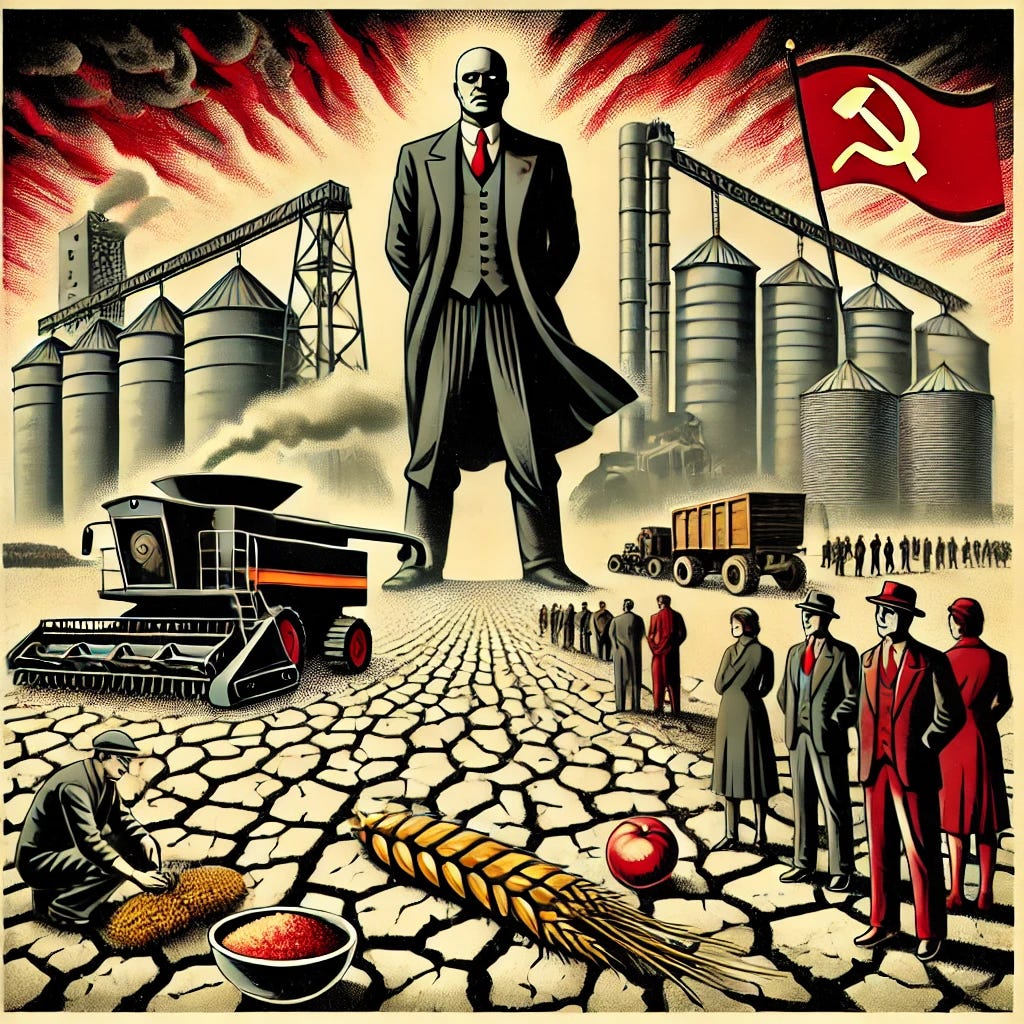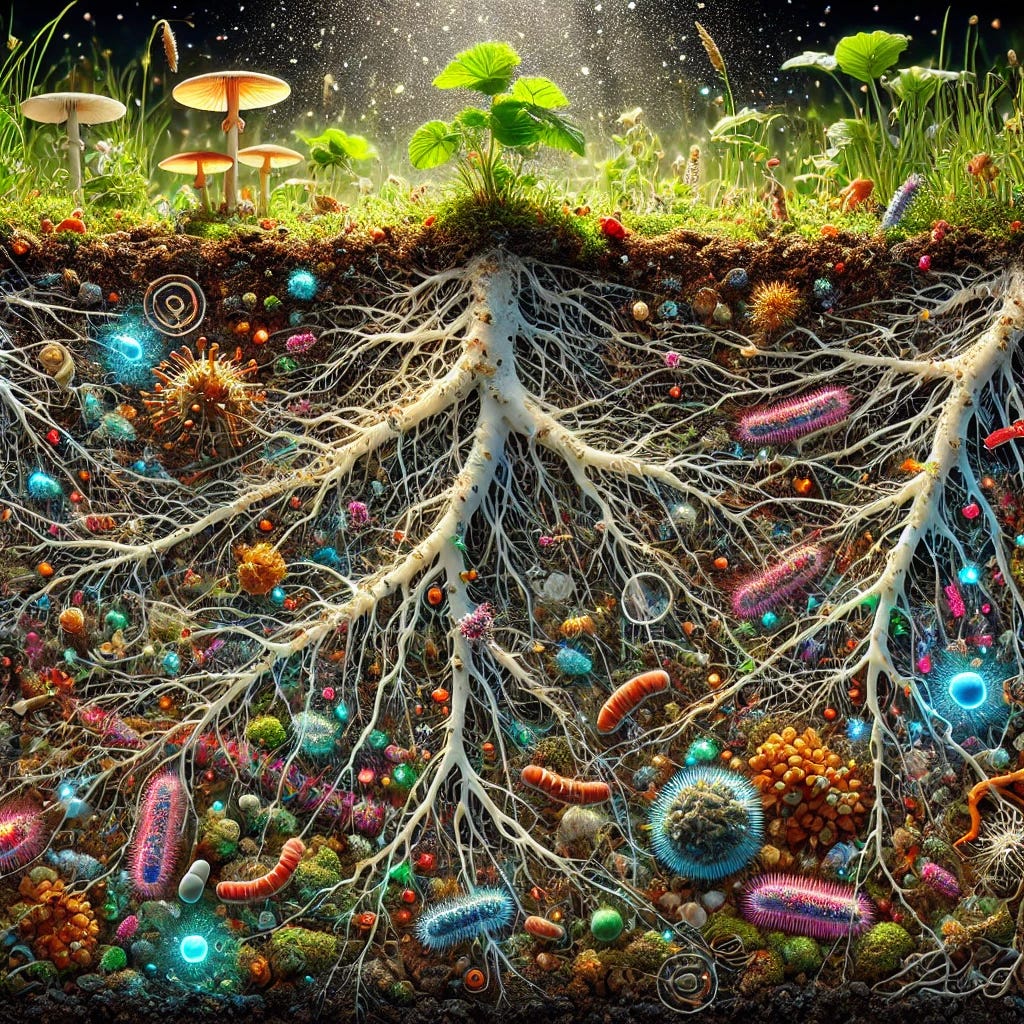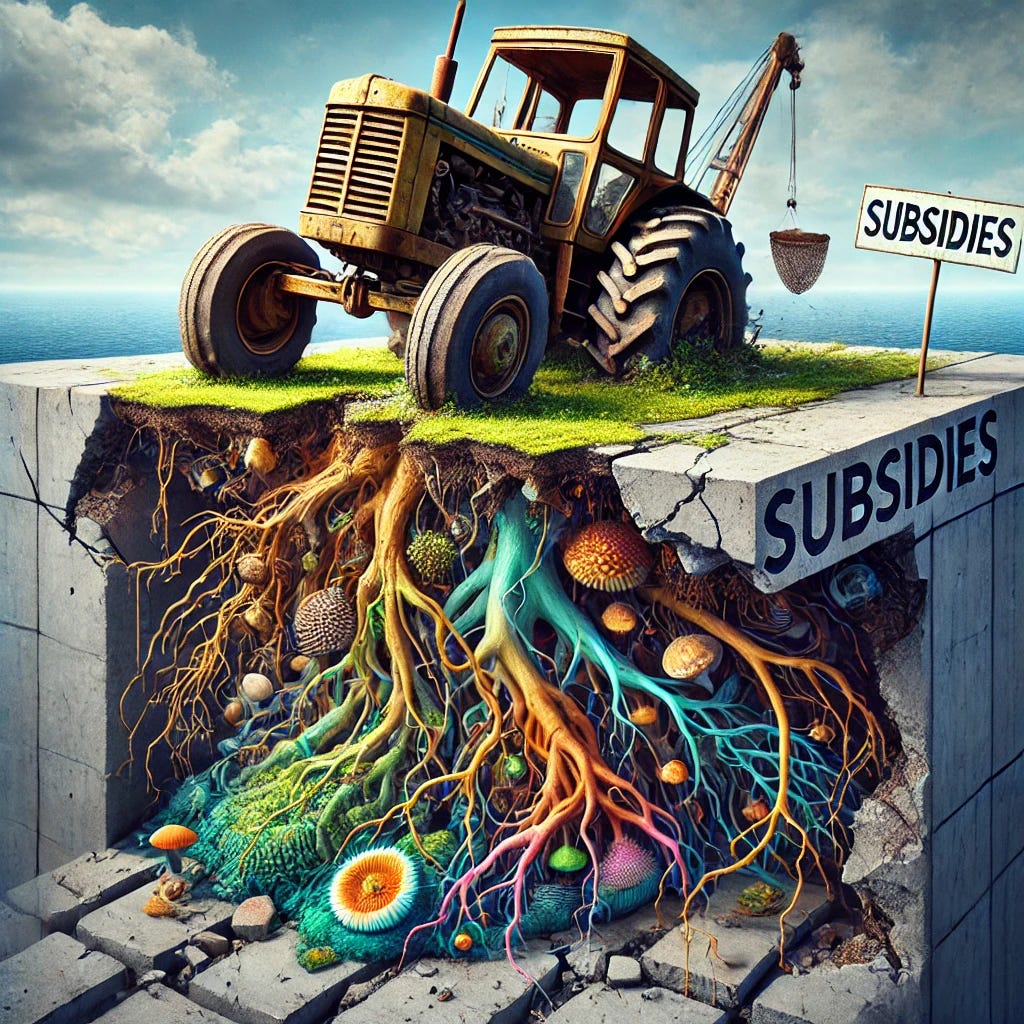Let's Take Meaningful Food System Action
We Have The Most Critical Asset - Seeds
The Abundance We Forgot: Seeds, Spores, and the Future of Our Food
Even as government subsidies are pulled from under our food systems, something older, wiser, and wildly more resilient is sprouting beneath us. What if seeds—not subsidies—were our true security?
Seeds Multiply When Shared
As winter gives way to spring in the Pacific Northwest, we’ve been deep in the pulse of the Agrarian Sharing Network’s Propagation Fairs—seven held already across Oregon, with thousands of hands exchanging scions, grafting knowledge, and seeds.
Over 6,500 seed packets have been used so far to share community-donated seeds—many broken down into dozens of smaller portions. You’d think our seed supply would be shrinking. But the opposite has happened: we’ve grown by over 200 new varieties and increased 30% in overall volume.
This is the Seed Increase Initiative, born from the vision of Nick Routledge, long-time advocate for bioregional resilience and co-creator of Food Not Lawns. And it speaks to a deeper truth: nature doesn’t run on scarcity. It runs on abundance. Quiet, exponential, often ignored.
The lesson? Seeds don’t diminish when shared. They multiply.
The Hidden Math of Seed Abundance
A single seed becomes a plant. But that plant, if allowed to complete its life cycle, becomes a seed vault in itself. Consider just how generous some common garden plants can be:
Plant Seeds per Plant (Avg.) Notes
Lettuce 20,000–25,000 From a single mature flower head
Tomato 150–300 per fruit One plant = dozens of fruits…Let’s assume 150 seeds per tomato and 1 plant with 12 tomatoes in year 1. So we get 12 x 150 seeds = 1,800 seeds from year 1 plant growing. Let’s further assume in year 2 that we plant 50% of those seeds from year 1 = 900 seeds and further assume we get only 50% germination to production (ridiculously low). So we get 450 plants with 12 tomatoes each, so that is 5,400 tomatoes. 5,400 tomatoes with 150 seeds each gives us a total of 810,000 seeds. As a reflection point, 1 kilo of tomato seeds in Europe can cost over 60,000 Euros!
Basil 1,000–2,000+ From mature seed stalks
Sunflower 1,000–2,000 One head, if fully pollinated
Radish 60–100 per pod cluster Several clusters per plant
Beans (dry) 25–100 per plant Variety and spacing-dependent
Squash (winter) 100–300 per fruit Huge seed return from one
Carrot 1,000–2,000 Biennial; seeds in second year
Corn 600–1,000 per plant Roughly one ear, tightly packed Kale 1,000–5,000 Seed pods similar to radish or mustard
This isn’t just productivity—it’s potential. Every garden, if allowed to ripen, becomes a seed bank.
Spores: The Underground Broadcast
While seeds rule above ground, fungi work beneath it—and they are no less prolific.
A single mushroom can release hundreds of millions to billions of spores. Some examples:
Agaricus bisporus (button mushroom): up to 16 billion spores per cap
Oyster mushrooms: billions released daily
Shiitake: prolific dispersal per flush
But fungi aren’t just trying to reproduce. They’re building connection. Spores become mycelium, and mycelium forms a hidden web that:
Builds soil structure
Shares nutrients between plants
Holds water and stores carbon
Breaks down toxins and organic matter
Forms the living foundation of most terrestrial ecosystems
If seeds are the library of life, spores are its whispers—connecting roots, soil, and time.
Why Then Do We Need Subsidies?
Here’s the paradox:
If seeds and spores are so abundant, why does our food system need subsidies at all?
The answer lies in the system itself.
Government subsidies exist not because nature is insufficient, but because we’ve designed food systems that are inherently unsustainable without external support.
What subsidies are really propping up:
• Monoculture farming that depletes soil instead of regenerating it.
• Long-distance supply chains that require fossil fuels to transport food across thousands of miles.
• Corporate agribusiness that profits from cheap raw commodities (corn, soy, wheat) processed into unhealthy products.
• Low food prices that don’t reflect the real cost of production (ecological or human). Even with these subsidized food prices, groceries in 2025 are significantly higher and many smaller farmers can’t get by.
So, when subsidies are removed, the system trembles—not because nature fails, but because we've been distorting its logic for generations.
A Different Future Is Already Sprouting
But outside that system, something else is rising—quietly and powerfully.
At our research site in Veneta, Oregon, we steward:
40 acres of wetland, orchard, dryland, and edge ecosystems
A living archive of over 2,000 seed varieties
A vision for food systems that don’t rely on subsidies but on relationships—between plants, people, and place
Livestock on-site to provide soil foods and spiritual sustenance.
Here we will demonstrate:
Seed sovereignty and increase
Dryland resilience without irrigation
Food forests and fungal partnerships
A living seed commons rooted in place
Here Are Some Key Action Points
Find those wishing to grow food locally with land. So much land is growing things inefficiently. How can we create systems to help this be more efficient?
The Willamette Valley, is one of the most fertile and food-potential-rich regions in North America. Yet, like much of the continent, it’s underutilized or misaligned with regenerative potential.
Here are concrete steps and system-building strategies we can use to connect people wanting to grow food with underutilized land—tailored to the Willamette Valley's ecology, culture, and opportunities:
1. Map the Commons – Build a “Land & Growers Matchmaker”
Create a bioregional map or open ledger (possibly within Perma-ledger or farmOS) of:
Underused private land (especially peri-urban or rural residential landowners with 1–10 acres)
Public or church-owned land
Transitioning or retiring farmers who don't want to sell but are open to sharing/stewardship
Willing growers with experience (or a desire to learn)
Tool ideas:
Build a “Grow Local Willamette” registry like Landshare (UK) or Yard to Table
Use simple tools like Airtable, Farm Hack, or even a community-sourced Google Map at first
Add opt-in tags like: food forest / dry farming / CSA / native plants / intergenerational access
2. Create Stewardship Agreements, Not Ownership
Ownership can be a barrier. Instead, focus on:
Stewardship leases (like 5-year rotating agreements)
Sharecrop-style agreements that are equitable and permaculture-aligned
Land linking models like Oregon's own Oregon Farm Link — but localize it further with food-not-profit language. Friends Of Family Farmers are also very active
3. Train & Equip New Growers
Many people want to grow, but don’t feel ready. Offer:
Free or low-cost seed kits (we have the inventory!)
Starter workshops on dry farming, permaculture guilds, and food forest design
Partner with groups like OSU Extension, Agrarian Trust, or CSA coalitions to cross-promote
4. Efficient Land = Layered Systems
What makes land inefficient? Often it's monoculture, excess lawn, or neglect. Instead:
Transition to stacked yields: layers of production (e.g., poultry + trees + mushrooms)
Use perennial-heavy guilds that require minimal annual input
Dry-farm where possible—the Willamette’s winter rainfall and volcanic soils are ideal
Promote models like:
• Alley cropping
• Community Food Forests
• Neighborhood CSA nodes
5. Launch a Local Movement Identity
Name and frame it as a Willamette-wide movement:
“Grow Willamette”
From Empty Fields to Edible Futures
Use storytelling to show:
The waste of unused land
The abundance of collaborative growing
The value of building food security now—not waiting for systems to collapse further
Bonus Ideas:
Offer incentives like: seed exchanges, soil testing support, mushroom spawn giveaways
Create rotating “demo gardens” across partner lands to spark local replication
Host seasonal “open land days” where people can tour available land and meet growers
These are at least good talking points to get us into dialog on this.
The Seed Logic Returns
If one lettuce can yield 25,000 seeds…
If one mushroom can release 16 billion spores…
If one gardener, one community, one patch of soil remembers how to listen…
Then what are we waiting for?
Let’s rebuild our food systems from the bottom up.
Let’s put seeds—not subsidies—at the center of our survival.
Let’s return to the logic of life.
Thank you as always for reading this, 2025 has begun with lots of changes for us and we are a little behind where we want to be. However, we are now catching up, so more news soon.




